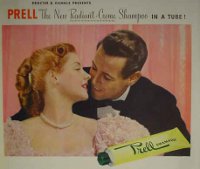
Oscar Wilde wrote The Picture of Dorian Gray over a hundred years ago and while it wasn’t tremendously well received in its day Wilde’s cautionary tale of a man captivated by vice and enslaved by hedonism is such a timeless one that there have been numerous adaptations of Gray – from movies to musicals and even an opera. It’s a juicy story with a lot of thought-provoking themes wrapped in an alluring package.
This new adaptation of The Picture of Dorian Gray is no exception. Directed and written by Glory Bowen it’s playing now at The Robert Moss Theater.
For those not familiar with The Picture of Dorian Grey – it’s a twist on the Faustian principal of trading in something which seems extraneous at the moment (visibly aging) for something that seems vital to a perfect existence (eternal youth and beauty). As Dorian moves through his life, perfecting the art of being cruel, selfish and hedonistic a portrait painted long ago by his good friend Basil Hallward does the dirty work of hard living for him. Dorian’s youthful visage remains in tact while the portrait becomes twisted with cruelty, withered with age, even dusted with a coating of evil. Acting as tempter, seducer, and encourager is Lord Henry (Harry) who somehow brings this strange situation into existence by simply being enthralled with Dorian. He coaxes Dorian to wish for eternal youth and in some strange way it all happens.
Bowen’s adaptation stays faithful to this set up. Lord Henry (Walter Brandes), Basil (played by a compelling and captivating Eric Percival) and Dorian (Adam Barrie) are all members of England’s idle rich and have very little to do all day besides talk about their latest hobbies, gossip about the last person they were with (“she is a peacock in everything but beauty” they snidely remark about one unfortunate hostess), and invite each other to plays, the opera, lunch and opium dens. This causes them all to be very, very self absorbed.
Lord Henry, specifically, is the tray upon which all of Wilde’s best lines are served and Walter Brandes does his best to make sure we don’t forget it – he savors every word as if it were a balsamic-soaked Portabello mushroom and lets certain phrases roll around on his tongue like a heady, lush, full bodied red wine ending every sentence in a hummmmmmmmm. Sin and temptation – that’s good ole Harry’s watch-cry and his red vest is such a token of devilishness that he might as well be sporting a pitchfork as he descends onto the scene in a cloud of brimstone.
The homoerotic overtones that needed to be deeply hidden or heavily veiled (much like that aging portrait) by Wilde in the original have been coaxed out a bit more by Bowen; she chooses to show the hand, and therefore there’s not as much double-entendre with which to beguile and tease the audience into an “ohhhh” or a “did they just??” That sly wink is what made Wilde’s original novel a playbook of code for those who were meant to understand it, and yet just a good story for those who didn’t. Bowen chooses to allow her men to be emphatic and dramatic – leaving a little less to the imagination, but in the same instance scoring one for progress.
Barrie’s Dorian is both vexing and pitiable. At one moment you’d like to slap him, at other times you’d like to ease him of this terrible burden that he once mistook for a gift. He’s never so churlish as when he, after finding out that the love of his life, Sybil Vane (wonderfully portrayed by Allison Hirschlag ) has killed herself out of despair for loving him has no remorse and, rather than going to comfort her family, he goes out into the night to enjoy all it has to offer.
Beautifully done are the scenes where the ensemble are speaking through dramatically lighted frames, their speech overlapping, their words echoing each other. This, coupled with sound design by Jacob Subotnick goes a long way to create the Gothic atmosphere of the time, and also adds some mileage to the limited set design that is the hallmark of this festival. With simple frames and lighting which throws eerie shadows scenic designer Craig Napoliello and lighting design Yuriy Nayer are able to keep you in perpetual uneasiness. After all, we shouldn’t forget that Wilde originally conceived this as a horror story.
For some, The Picture of Dorian Gray is a warning, for others it is simply a good story. Whichever it is for you – you’ll want to picture yourself in the audience.
(Click here to read Glory Bowen’s Q&A with THM)
~~~
THE PICTURE OF DORIAN GRAY Produced by G-Money Productions benefiting The Gay & Lesbian Alliance Against Defamation (GLAAD) Written by Oscar Wilde Adapted for the Stage and Directed by Glory Bowen Running time: 2 hours, no intermission Venue: The Robert Moss Theater, 440 Lafayette Street, 3rd floor Performance dates: Sat 6/5 @ 11am Sun 6/6 @ 3pm Tues 6/8 @ 6pm Thurs 6/10 @ 6:30pm Sat 6/ 12 @ 8:30pm Tues 6/15 @ 8:30pm Fri 6/18 @ 6:30pm Mon 6/21 @ 6:30pm Purchase tickets here.






{ 0 comments… add one now }
{ 1 trackback }